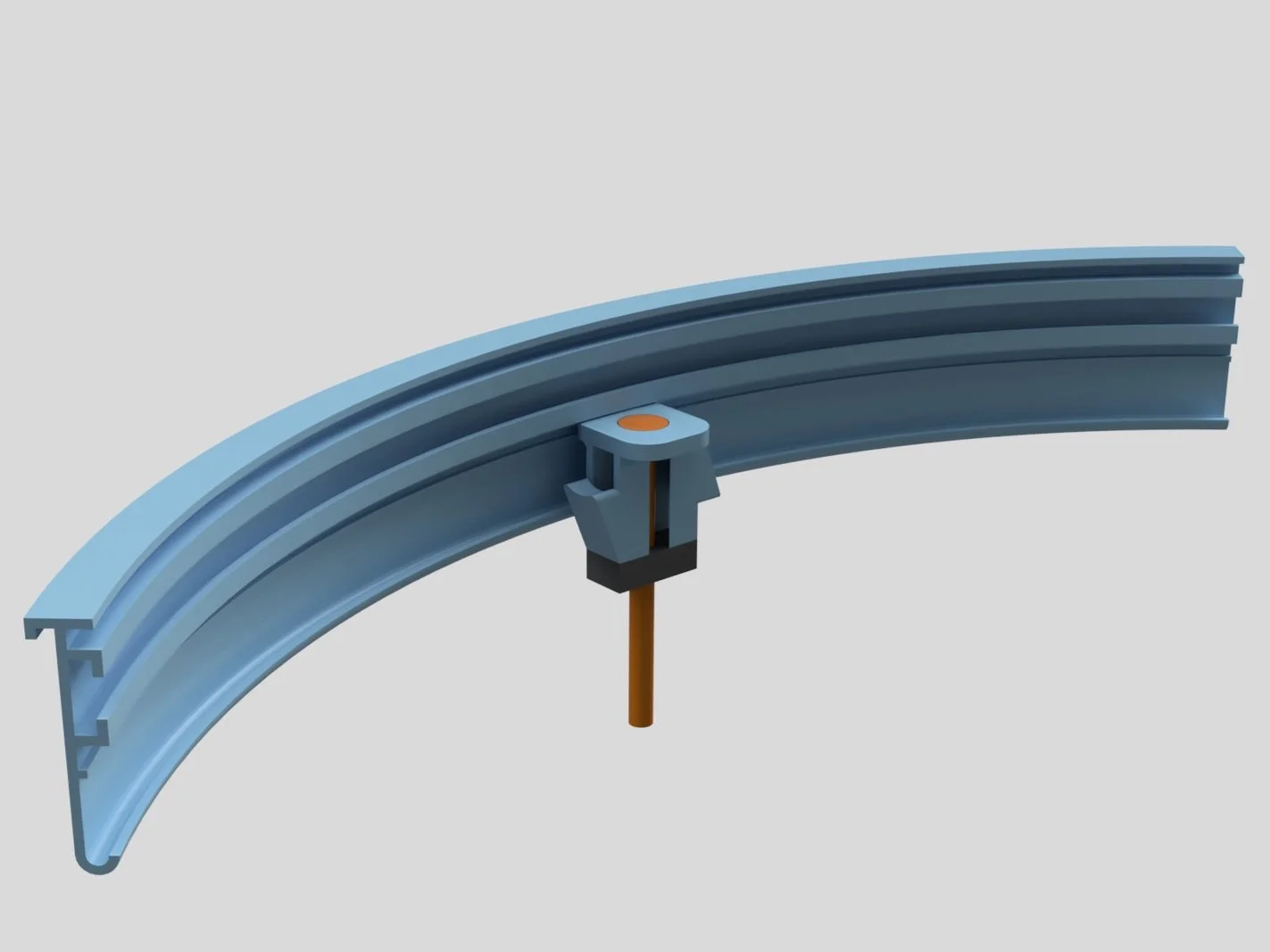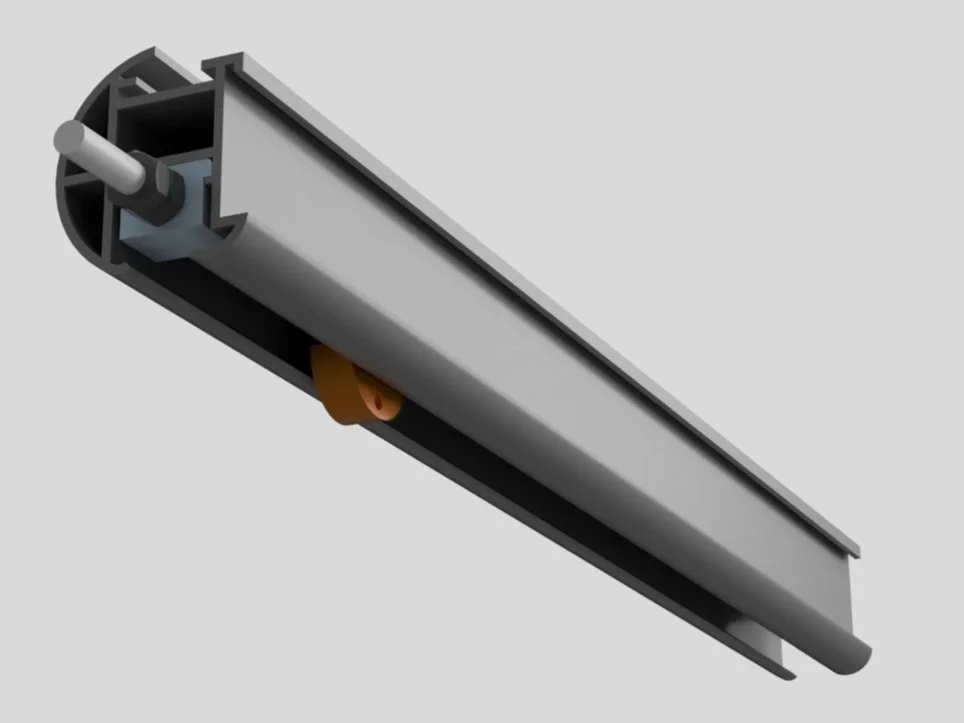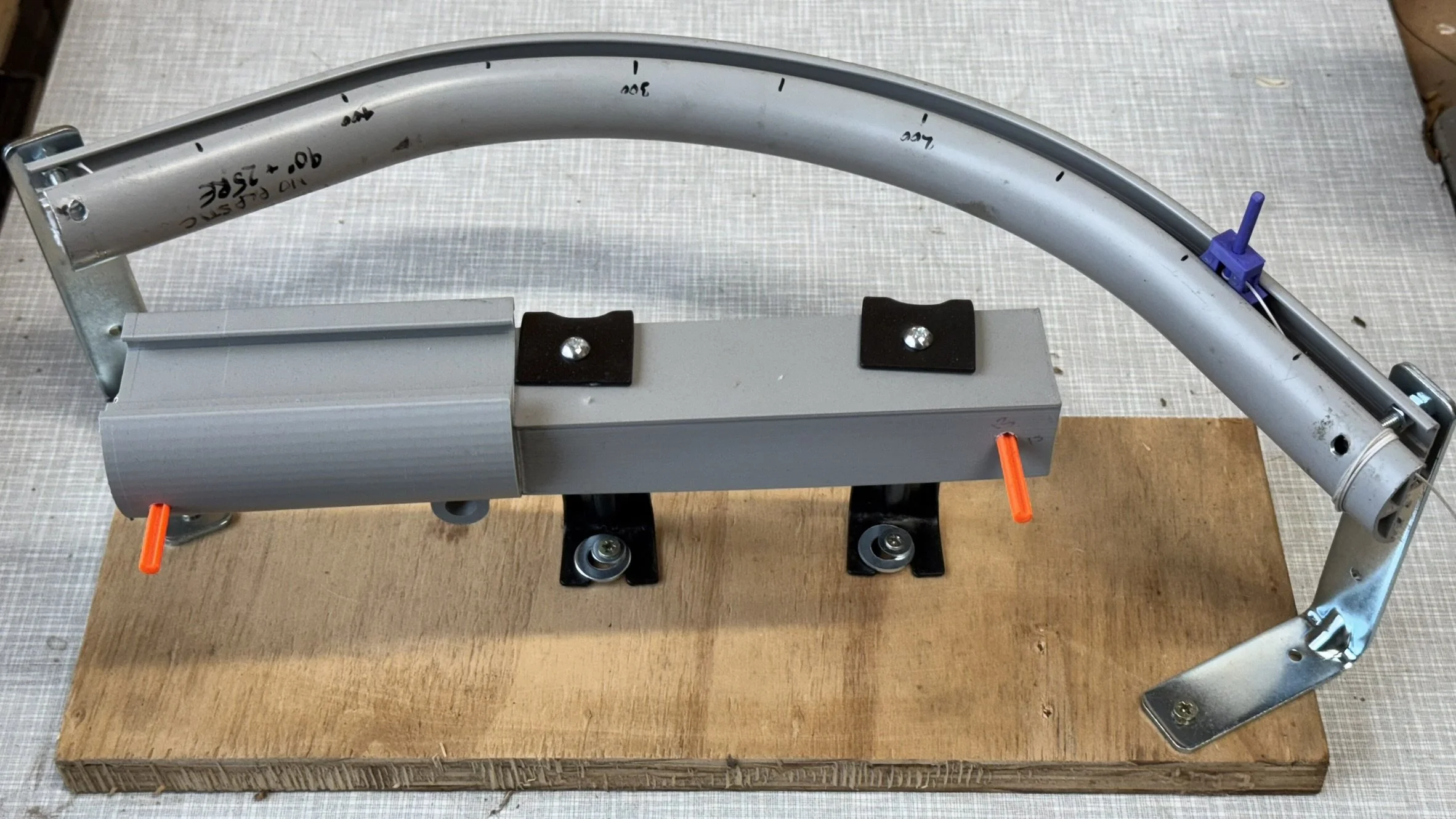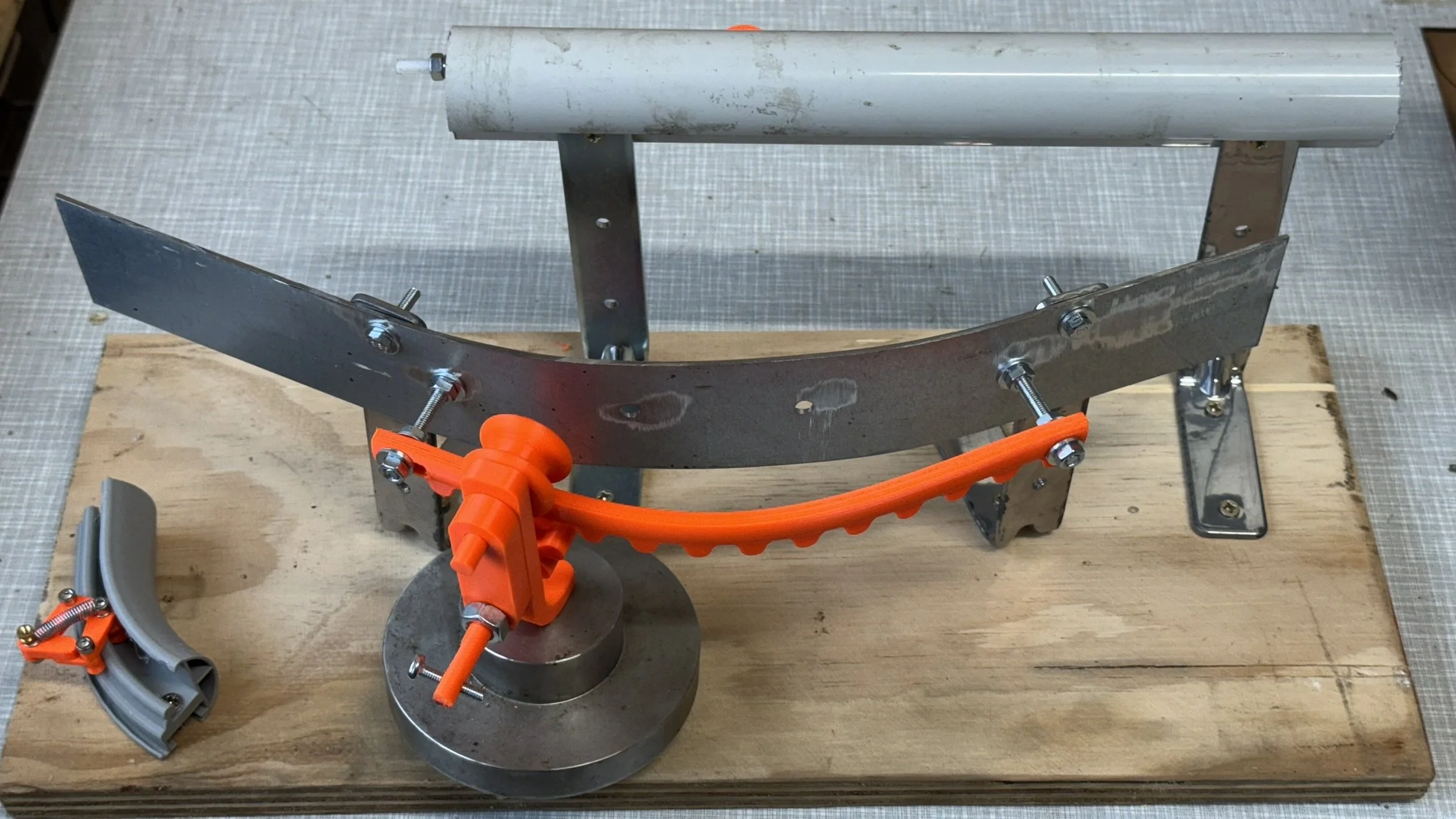Flexible Curtain Track - Motorized
Vale Industrial Design was approached with the task of exploring a solution to bring an electric curtain track (with the ability to be hand-bent to shape around bay windows) into a manufacturer’s current product portfolio of manual, rigid curtain tracks.
Customer Brief and Specification
Existing prototype must fit into an existing track profile. Developing a new aluminium extrusion die is out of scope for this proof of concept phase
Minimum bend radius = 150mm
No specialist tools required for installation.
Concept Visualisation
This stage of the design process is very open, particularly for this project. The specification provided little constraint on the design direction and this encouraged a high level of divergent thinking. These drawings focussed primarily on developing the core drive system for the curtain carriers. Systems included:
Power screws (rigid and flexible)
Belt drive
Rack and pinion
Pneumatically operated with magnetic couplings
Linear motors
Concept Selection and 3D Modelling
After conversations with the customer and further considerations on the benefits and drawbacks of certain ideas, it was decided that 4 drive systems would be modelled and used as the foundation for separate Proof of Concept (PoC) models. Those modelled, were:
Capstan drive
Power screw
Simple belt and pulley
Flexible rack and pinion
Proof of Concept (PoC) Builds
Drive systems were quickly verified by producing a number of quick “proof of concept” models. The aim here is to quickly develop cheap models that provide essential information to the designer and the customer as to the validity of certain tehnological methods.
Hand tools
General fittings like wood screws
Scrap track pieces from the manufacturer used
Basic 3D printed custom parts
Scrap plywood used for base
PoC Selection For First Build
The capstan drive was identified as the most suitable drive unit to develop further. The design was progressed through provisioning for the electronic equipment required for wireless control.
New CAD based on the PoC design. Improvements made to enlarge the housing size to suit fabrication methods
Functional wiring diagram developed
Inclusion of ESP32 microcontroller, DRV8833 motor driver and Pololu micromotor
Webpage hosted interface for control over hardware WiFi
PWM for motor speed control
Services Used
Further Development
The customer will communicate when they want to push further with the development of this project. As of summer 2025, a great position has been reached. The effectiveness of the capstan drive unit has been demonstrated and whilst other projects now take priority, the next steps can be continued immediately. These are detailed below
Testing the drive unit on a curved track.
Power cable management
Suitable (larger) motor selection based on loading
Refinement of the drive for low friction with the track
Development of new aluminium track extrusion








